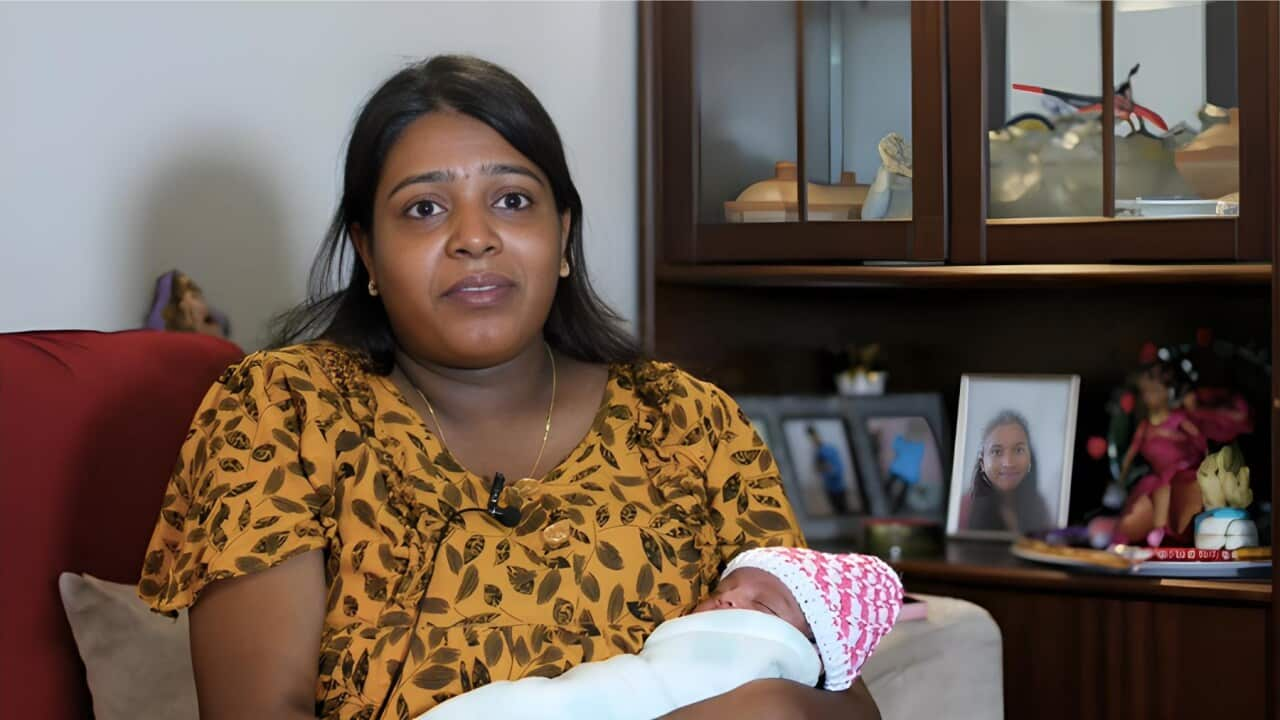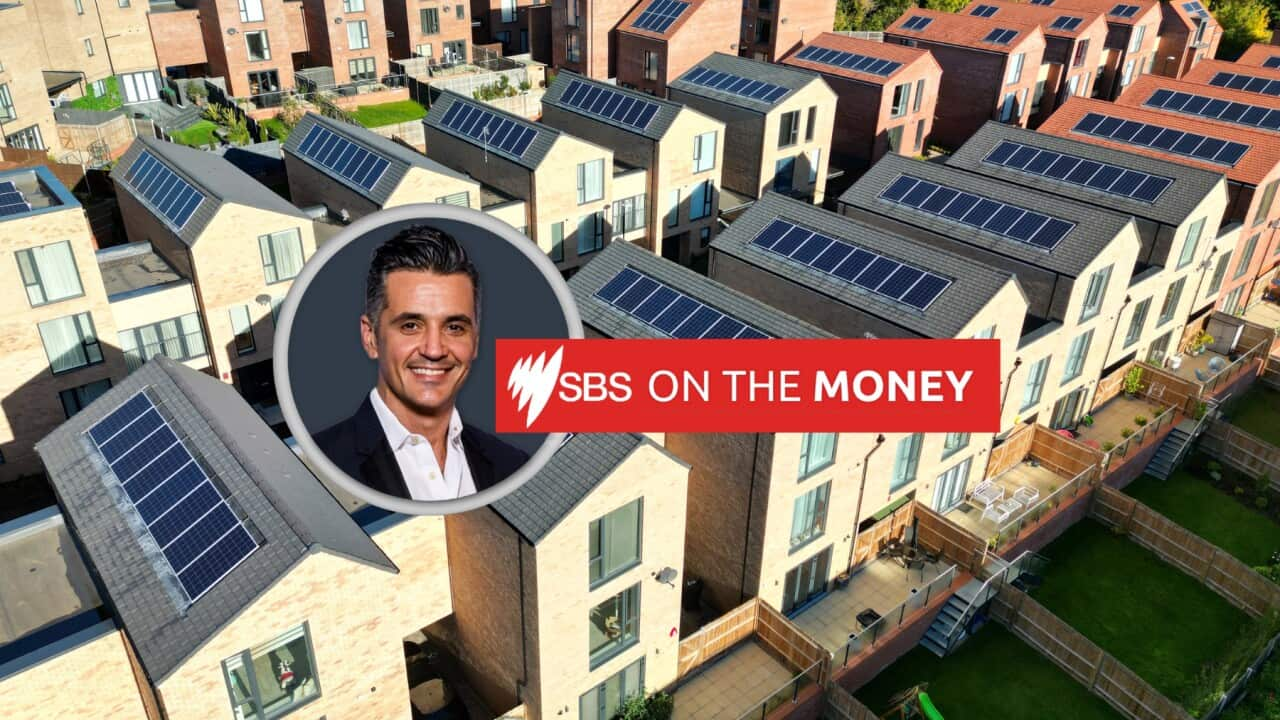TRANSCRIPT
More young people than ever before are shifting towards the political left... and staying there.
The Australian Electoral Study since 1987 has found that as people age so too does their support for the Coalition.
But that has now changed.
Only about one in four voters under the age 40 voted for the Coalition in 2022 - and support for both major parties dropped to its lowest point since the 1930s.
Twenty-two year-old Hannah Tall is a member of the New South Wales Young Greens.
“For me personally, and I think a lot of young people, the two major parties - Labor and Liberal - are failing young people and have taken the support of young people in the past for granted. And they have systematically betrayed our interest, have served the interest of their donors, like larger companies over the individual, you know key, for me it is more about policy because it's systematic. Refusing to properly tackle the climate crisis, ignoring renters, but rather propping up property investors, under-funding public schools, and of course saddling us with a massive HECS debt.”
Hannah says it's a systemic issue with governments.... and she's not alone.
In the 1960s and 70s, around eight in ten voters considered themselves to be a partisan of one of the major parties, but according to the report in 2022 just 58 per cent considered themselves aligned with one of the major parties.
Speaking to people from a range of age and gender demographics on the University of Sydney campus about their last election vote, this trend was clear.
VOXIE 1: "I'm Patty, I'm 31 and I voted for the Greens. Just seeing what happened before, and just hoping for a change i guess."
VOXIE 2: "I'm 57 years of age and I voted for the Greens in the last election. I can certainly believe it's happening given the issues in the world around climate change, I think also housing issues as more people rent as they see the promise of home ownership of a solid future is just not working anymore. THe expectations, the dream is not happening for them, so they;re critiquing it."
VOXIE 3: "I'm 19 and I voted for the Greens party. Personally, I also voted towards the left and I think it's more to do with the prevalence of social media. And I think there's more leftist posts which obviously influence the younger people, and me included."
VOXIE 4: "I'm 22 and I voted for the Animal Justice Party. Yeah well I guess I support animal justice and I think those are the guys to vote for since animals are so greatly mistreated in our country.”
Dr Sarah Cameron is a Chief Investigator on the Australian Election Study and Senior Lecturer in Public Policy at Griffith University.
She co-authored both the 2022 Australian Electoral Study, as well as the Trends in Australian Political Opinion report, which analysed patterns over time since the first electoral study in 1987.
Younger people shifting to the political left was a clear trend, and the survey demonstrated they weren't going anywhere as they got older, as Dr Cameron describes.
“There's this argument that as people get older they shift from the left to the right in their political preferences - that's known as a life cycle change in how people vote. And in the Australian context we're seeing more evidence of generational change in voter behaviour. Younger generations, millennials and Generation Z, are further to the left in their political preferences and their voting behaviour, than previous generations were at the same stage of life. And what we are seeing as these groups get older, particularly Millennials who are no longer particularly young, we are not seeing this group shift towards the right as they get older. If anything, we are seeing Millennials shift further to the left.”
This generational shift to maintain support for the political left is particularly clear among Millennials - who the report classifies as born between 1981 and 1996 - so that's anyone roughly between the age of 27 and 42.
They demonstrated around 35 per cent support for the Coalition when they entered the electorate in the 2000s, which has now dropped to 25 per cent.
Generation X - or those born between 1965 to 1980 - mostly follow this trend as they do not report an increase in voter's support for the Coalition as they get older, but do demonstrate a drop in support for Labor.
But another key change is evident in the widening gender gap in voting behaviour.
Back in the 1990s, women voted more to the right than men, whereas now they generally vote further to the left than men.
And this gendered gap between left and right has in fact widened.
“So we have seen a long-term reversal in the gender gap in voting behaviour. Back in the 1990s it was the case that women were more likely to vote for parties on the right than men. And then over time that has reversed so that women are now further to the left than men. And in fact, the gender gap in voting has not only reversed over time but it has also widened. So over the past three elections, we have seen the biggest gender gap in voting than in any other time on record. So support for the Coalition among women has really deteriorated.”
One of the theories raised in the study was that the Coalition has a 'women problem' as cited even by former Liberal Prime Minister Malcolm Turnbull.
Labor reached 52 per cent female representation across both Houses of Parliament after the 2022 election, while the Liberal-National Coalition's female representation sat at just 27 per cent.
Forty-one year-old Christie told SBS she voted Labor in the last election, and says she isn't surprised by this shift towards the left.
“I just think younger people are more aware and I guess more educated about climate issues, and social equity and things like that. And I don't think government can get away with it anymore.”
And for young women like Hannah it's not simply an issue of party representation.
“I wouldn't say the issues with the Coalition entirely lie with not having enough women in the party. The Coalition are a party, they're trying to keep the rich rich. They're into perpetuating sexist and anti-LGBTQIA structures, and these policies and structures are inherently against women's liberation. I mean, they're a Conservative party, they have traditional values. So even if there were more women joining to perpetuate these values, I don't think it would help.”
President of the New South Wales Young Liberals, Chanum Torres, says the group are aware of this rising popularity for the left.
The increasing cost of living and the environment were two of the top issues on voter's minds in the 2022 election, as identified by the Australian Electoral Study.
One in three people noted the economy and cost of living as the most important issue, followed by the environment, health and Medicare.
Chanum says their New South Wales branch has a strong host of young women on the executive board, and that young Liberals are trying to vocalise such issues as barriers to home ownership to the party.
“So the Young Liberals are being very vocal about the need for our party to be pro-density. We need to be a party that backs in young people to have a share in the Australian Dream. So we have been internally in the party ad in the media as well, been pushing for policies that make it easier to build homes - pro-supply, pro-density, to ensure that people our age can get a foot in the housing market.”
While voters preferred the Coalition's policies on management of the economy, taxation and national security, voters preferred Labor’s policies on the cost of living, education, health, and the environment.
When asked if he is worried about his party's future, and that of the Young Liberals, Chanum remains confident.
“Look I wouldn't say, I wouldn't use the word worried. We definitely see it as a challenge we need to meet. Political parties if you look throughout history have always been in the business of responding to the priorities and values of voters at that time. So we as Young Liberals see that as part of our role, to ensure that the Liberal party reflects the hopes, dreams and aspirations of voters my age.”
This shift towards the left, and away from partisan support for the major parties, has coincided with increased support for a group in the 2022 election who became known as the Teal Independents.
According to the report, Teal voters are on average ideologically close to Labor voters, placing themselves just left of centre on a zero to 10 left-right scale.
Dr Monique Ryan is a Federal Member for Kooyong in Victoria.
She says the success of Teal Independents is owed to leadership that is advocating for the needs of communities, particularly when it comes to such issues as climate change.
“I think people are getting increasingly disenchanted with the mainstream parties and the extent to which they either are or perceived to be captured by other external interests. People have felt frustration with, well in Australia, with the last government's inaction on climate change, its inaction on integrity and transparency in government, and its attitude toward women - really highlighted a disconnect between the Conservative government and women in Australia on a number of fronts, that led them to look elsewhere.”
Dr Cameron says the Teal Independents' success in the 2022 election was owed in part to dissatisfaction with the previous Liberal-National coalition government, particularly around issues such as gender equality, political integrity and climate change.
But distrust and dissatisfaction with the major parties is actually something that has been brewing over the past few elections.
“So what we saw in 2022 was that this disaffection with the major political parties was met by these well-funded, well organised Teal independent campaigns, which were also featured extensively in the media. And so the dissatisfaction that led to their success has been there for some time but in 2022 we saw at least in some electorates, we saw a really viable alternative presented in the form of these Teal Independents.”
As well as diminishing support for the major parties, Australians are also concerned about how our democracy is functioning.
While 70 per cent of Australians reported being satisfied with how democracy is working, just 30 per cent believe people in government can be trusted.
Forty-year-old John refused to vote in the last election and admits he may represent more of an extreme perspective.
“I didn't vote in the last election. I just put a little anarchist symbol on there because I don't like any of them. I sometimes have voted for Greens, I used to be in the Greens, but I don't see much point in Parliamentary politics, I'd see more effect doing other things, so.”
But it's clear there's a growing distrust of politicians and government among Australians, as Dr Cameron describes.
“We have seen satisfaction with democracy reach record lows in recent years, and also political trust reach its lowest level in over 50 years. Just 30 per cent of Australian believe people in government can be trusted. So we've seen evidence that people aren't particularly happy with the state of democracy and political parties in Australia.”
There's no doubt the major parties will be fighting to secure their votes - especially as these younger generations continue to make up a greater proportion of the electorate.
“On the one hand we can expect things to shift towards the left. But on the other hand parties are going to be responsive to that. So it will be interesting to see how that dynamic plays out over coming elections as the Liberal-National Coalition in particular seeks to find out how to respond to their declining support among younger generations, including Millennials and Generation Z.”













